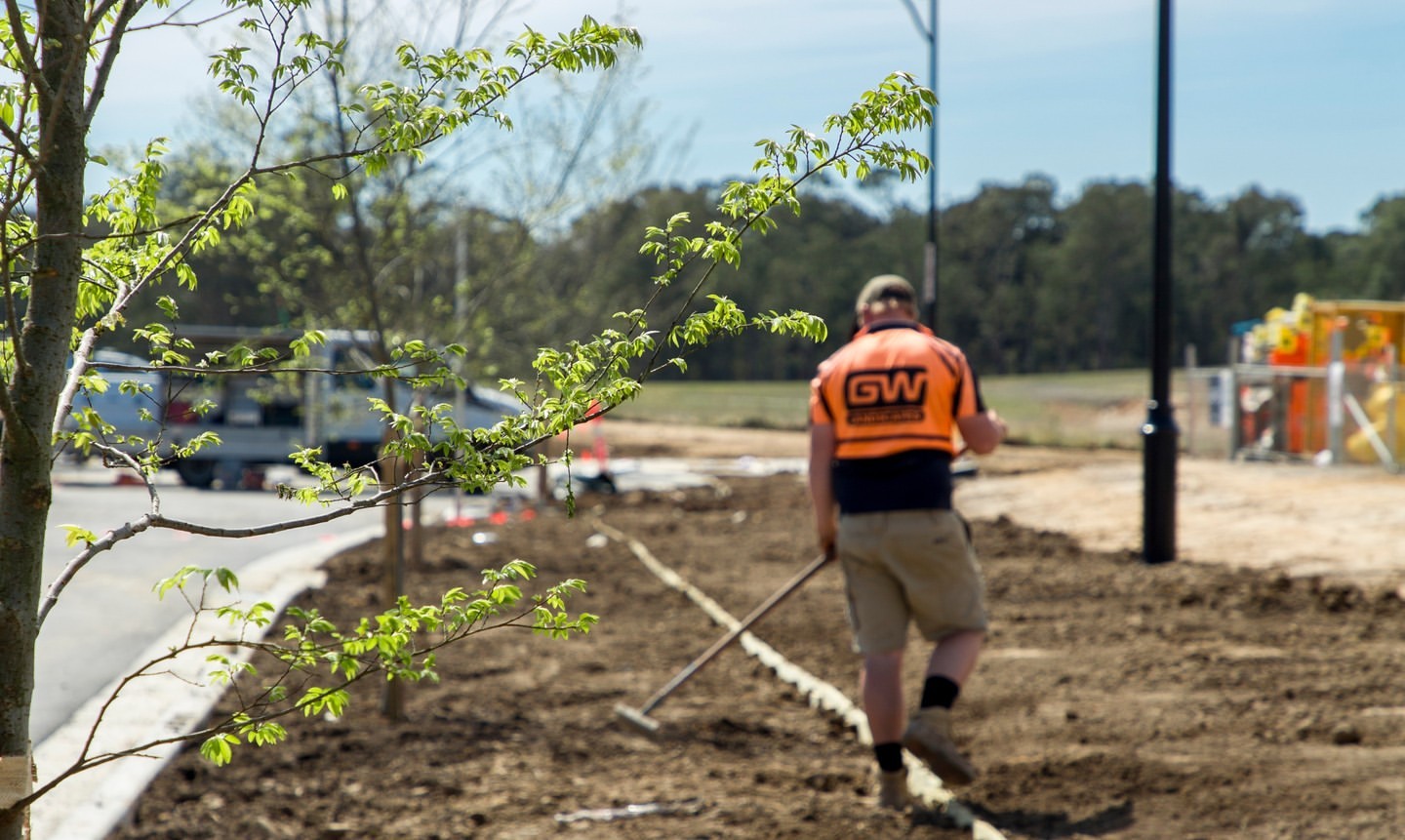In Western Sydney, where over 13,000 young people are looking for work, a landscaping company is changing what workplace inclusion can look like. Greater West Landscapes (GWL), known for its large-scale commercial landscaping projects, has managed to build a pilot as part of SVA’s Employer Innovation Lab, supporting at-risk youth and reshaping how businesses in the area think about recruitment and retention.
The results speak volumes: 471 job applications, 66 job offers, 32 hires with 21 already completing their probation, and a maintenance team growing by nearly 70 per cent.
Behind these numbers lies a story of innovation, empathy, and cultural transformation
The workforce challenges
GW Landscapes is a commercial landscaping company specialising in large-scale projects in Western Sydney. Like many businesses in the area, GWL faced workforce shortages. However, for a company deeply rooted in the Western Sydney community, simply filling roles wasn’t enough. The leadership team had been exploring ways to connect with groups often excluded from the traditional hiring pipeline and to create pathways for success, particularly for young people facing barriers such as limited education, lack of transport, or prior involvement with the justice system.
Joining the Employer Innovation Lab in May 2023 marked a strategic move towards this goal. From the outset, GWL committed to offering career paths to Western Sydney youth who had left school at Year 10, focusing on creating good quality employment options and careers.
Without Social Ventures Australia and the Employer Innovation Lab, this role—and everything we’ve achieved through the pilot—wouldn’t have been possible. Their support in designing, refining, and evaluating this initiative set us up for success. It changed how we think about workforce development”Peter Adcock • Managing Director GW Landscapes
Building the pilot
While the pilot targeted young people, GWL looked at inclusion more broadly – creating opportunities for other groups, including single mothers, Indigenous people and those transitioning from detention. Paul Hutchinson, a dedicated program coordinator, was at the heart of it. This was a new role, identified in the Lab’s early days, that proved pivotal to the pilot’s success.
Over 17 months, GWL:
- Simplified job descriptions to make roles more accessible.
- Raised apprentice wages to attract more candidates.
- Built clear communication with employment service providers to improve candidate referrals.
- Introduced structured probation reviews to track progress and well-being.
- Provided wraparound support such as mentoring and guidance for mental health needs.
From its start, the pilot addressed practical barriers head-on. For example, once transport was identified as a significant issue for young people staying in jobs, GWL decided to use, in some cases, company vehicles to help apprentices go to work and earn driving hours for their licences.
Wages were another sticking point. For many young people, the standard apprenticeship wage of $13.90 an hour couldn’t compete with retail jobs offering $24. In response, GWL raised first-year apprentice wages to $20 an hour, making the program competitive.
Applicants received coaching on job applications, including resume writing and navigating medical check requirements. The support extended well beyond the application phase, with regular check-ins. These progress reviews weren’t just about performance—they helped track progress, identify areas for growth, and focused on employee’s well-being.
The Employer Innovation Lab gave us the tools to listen to our workforce and refine our practices. Without SVA, we wouldn’t have been able to launch this program or create the systems that are now integral to our operations. They supported us in designing the pilot, and adapting it based on feedback, and evaluating its impact”Paul Hutchinson • Project Manager Employment Pathways GW Landscapes
A continuous learning curve
Every pilot comes with lessons, and this was no exception.
In its early days, employment service providers flooded GWL with applications for the available positions, yet many applicants had not been properly briefed about the role they were applying for. Building clear and honest communication refined the process and helped shift the focus toward individuals who were ready to engage with available opportunities. As a result, GWL hired 32 young people. To date, 21 new hires have passed their probation period, and six have reached the one-year mark.
Gradually the maintenance division grew from 35 to 59 – and that brought an unexpected outcome: with a steady pipeline of new hires, GWL’s existing staff had, for the first time, the chance to take on more responsibilities. The structured processes helped create a pipeline for internal promotions; some mentored newcomers and stepped into management positions.
Eventually, the pilot’s biggest impact was the organisation’s cultural shift. It strengthened team morale, boosted leadership opportunities and transformed the organisational culture, prioritising well-being and personal development as a way to boost productivity. GWL now focuses on “people flourishing,” which has become a cornerstone of its success.
Key takeaways for employers
- Job analysis & design: Allocate time to understand what type of jobs you will need for your project and what are the key tasks, skills and responsibilities. A dedicated coordinator was fundamental for the success of this pilot; this was a new role, designed to support workforce planning in a business with growth aspirations and a desire to support the community.
- Keep it simple: Simplify position descriptions and use plain language in job ads and application guides to become accessible.
- Schedule regular reviews: Set checkpoints throughout the pilot to share feedback, address concerns, celebrate wins and identify areas of growth.
- Invest in your partners: Collaborate with honesty with partners and be open to adapting your processes based on their feedback; it’s a two-way road.
- Invest in systems: Invest in structured systems for onboarding, mentoring, and feedback.
- Provide growth opportunities: Show people how they can advance in your business.
- Put people first: Check in on all staff members, address their concerns and refer individuals to external support when needed. A caring culture builds trust and cuts turnover.
We now say: when people flourish, profits flourish. It’s not just about filling vacancies—it’s about investing in people in a way that benefits everyone.”Paul Hutchinson • Project Manager Employment Pathways GW Landscapes
What’s next
GW Landscapes plans to scale the pilot across all divisions, hiring two new employees monthly over the next year. With this growth, the company aims to embed inclusive hiring as a core practice, ensuring a sustainable pipeline of skilled workers. They also setting up a work integration social enterprise to manage a nursery and provide training pathways for young people leaving detention centres as they want to continue creating opportunities for people facing obstacles to employment while strengthening their business.
Meet the team
Get in touch to find out how the Employment team can help you create lasting change
-
 Director, Employment Lisa Fowkes
Director, Employment Lisa Fowkes -
 Associate Director, Employment Simon Crabb
Associate Director, Employment Simon Crabb -
 Associate Director, Employment Johann Tabit
Associate Director, Employment Johann Tabit -
 Associate Director, Employment Ronan Smyth
Associate Director, Employment Ronan Smyth -
 Employer Engagement Lead, Employment Susan Whillas
Employer Engagement Lead, Employment Susan Whillas







